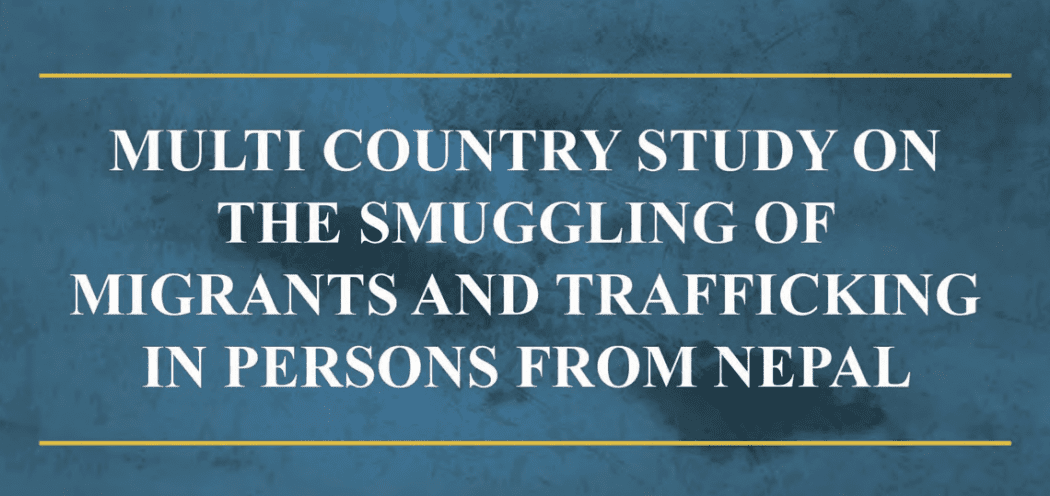
Nepal: Multi-Country Study on Trafficking in Persons and Migrant Smuggling
EXECUTIVE SUMMARY:
With an average of 1,500 Nepalese migrant workers7 leaving Nepal every day for foreign employment, international labour migration forms an important part of the lives of Nepalese citizens. Estimates, however, suggest that approximately 3.2 million migrants from Nepal are working with an irregular status in countries other than India8 . It thus helps to surmise that the number of Nepalese migrants in foreign countries, who may have utilized irregular channels, is more than the official data made available by the Government of Nepal.
While most migration from Nepal occurs legally, some of the greatest insecurities for migrants, and much of the public concern about migration, are associated with irregular migration or smuggling of migrants. The primary objectives of this study are to: (i) understand the realities and challenges associated with smuggling of migrants from Nepal, primarily to the United States, and Europe; (ii) inform about migrant-smuggling legal frameworks and policies and other measures at the national level and (iii) foster international cooperation. The report also seeks to examine the nature of human trafficking and smuggling of Nepalese migrants to South Africa and to East Africa, mainly Kenya. Although this report is focused on studying smuggling of migrants from Nepal, it also mentions smuggled migrants from Bangladesh and India (and sometimes Pakistan, and Sri Lanka), because almost all the available research, literature, and field visit interviews point towards South Asians (namely Nepalese, Bangladeshis and Indians) normally using the same routes and similar smuggling networks. The dynamics of smuggling of migrants, irregular migration and trafficking in persons in Nepal (and the South Asia region) is largely rooted in political instability, economic disparities, environmental factors, deep poverty and food insecurity.
Nevertheless, it also reflects the aspirations of relatively educated and wealthy individuals and families to settle in ‘western’ developed countries. The push factors emerge as far more influential than the pull factors, and the most significant push factor seems to be the need to escape from instability; either political or economic, or societal pressures that inhibit a stable life. The profile of smuggled migrants from Nepal to the US and Europe suggests that they are predominantly male, between the age groups of 20-35 years, largely unskilled, with decent levels of education. Although there is a high prevalence of irregular female migrants many of them transiting India en route to the Gulf Cooperation Council Countries (GCC), research indicates almost negligible numbers being smuggled to the US and Europe.
Read the full report here.
